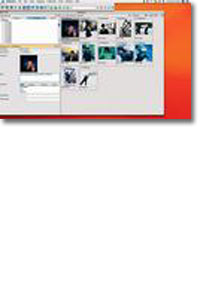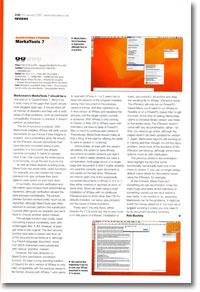
Review: MediaDex 2.0
- Article 3 of 19
- MacUser, March 2007
MediaDex is an asset-management system, based on the high-end Canto Cumulus media-management program.
Asset-management systems store images, or other assets, and their metadata - descriptions of things such as the subject of the image, who took it, what size and resolution it is, and so on.
MediaDex can store thumbnails of varying sizes generated from the original images and video files, and record metadata about them. The metadata it stores includes keywords and locations, as well as user-definable information. The Professional version of the system also lets you do the same with Raw images, PDFs and Microsoft Office files, and can extract information from the text of the latter documents (theoretically - we couldn't get it to). In all, MediaDex supports 175 file formats by default.
Once a file is catalogued, you can add extra information. An intricate categories system lets you classify files into collections and create relationships between categories. You can record annotations, and add notes and captions. You can add standard IPTC metadata fields such as copyright notices, bylines and headlines, and export them back to the assets. You can also modify existing information and the files themselves, since MediaDex offers a range of editing tools, including a Batch Rename function.
There are tools for automating processes such as archiving images, producing web-resolution Jpegs, or creating 300dpi images and then compressing them all in a Zip archive. There are also sharing options, such as web albums and slideshows, and maintenance tools for removing duplicates and finding missing assets.
Lastly, of course, there's the ability to search for files. The Find window uses simple pull-down menus in the same vein as iPhoto and iTunes, to create Boolean searches on the catalogue using any of the metadata fields, categories or keywords you've created, as well as who added the files to the archive and so on. Notably missing, however, is the ability to search by image resolution, colour space or text content. You can save searches for later, as well as import and export them, and there's an advanced option for constructing more intricate searches.
This isn't the first version of MediaDex, and naturally there are a few new features in the latest version. Support for AVI, DivX, PSP and Jpeg 2000 files, as well as their metadata, is now included. You can rate pictures and colour-code them with labels. There's also a new catalogue format, compatible with Cumulus 7, which is optimised for large amounts of data.
As with most asset-management systems, MediaDex is a nice idea in theory, but not so well executed in practice. It has a powerful range of functions, but isn't especially easy to use. Simple things are unsupported, such as being able to drag images from MediaDex into a DTP spread, and the ability to search text files content.
We imported 14,000 files into a MediaDex catalogue, including images from more than 20 image discs from the likes of Photodisc, Artville and Stockbyte. Only Stockbyte's included any compatible descriptive metadata, leaving the vast majority of imported images without descriptions; filenames were non-descriptive so provided no help. As a result, we would have had to have gone through each image manually, giving them keywords and categories, to get any real benefit out of the program. In mitigation, searching for files in MediaDex is very fast.
If you don't yet have a big collection of images and are planning ahead, MediaDex could be a useful investment, provided you can stick to a strict metadata maintenance routine. But if your existing images aren't tagged with descriptions, you might as well stick with your current system, even if it is just a file browser and a set of CD books.


